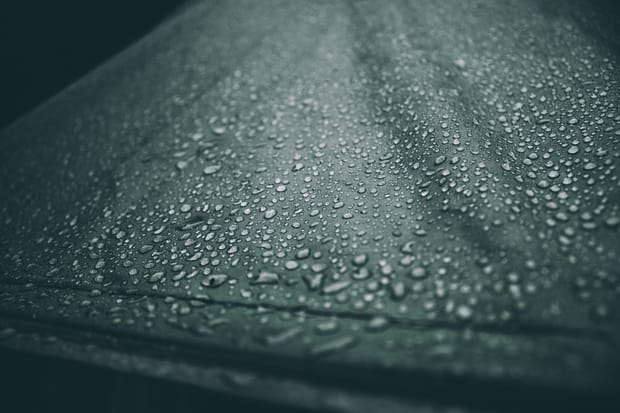Rain is where waxed canvas and oilskin earn their reputation. These fabrics were created long before synthetic waterproofing existed, and even today they remain some of the most reliable materials for wet weather. Understanding how they respond in steady rain, mist, and heavy moisture helps you know what to expect from your gear when conditions turn.
Waxed canvas absorbs the sound of rain instead of resisting it. When droplets hit the surface, the fabric darkens slightly, but the water does not penetrate. Instead, it spreads for a moment and then rolls off in beads, leaving the canvas protected underneath. The wax coating forms a natural barrier that seals the fibers without making the material rigid. In light drizzle or steady rain, a waxed canvas bag remains dry inside while the exterior develops a temporary damp sheen that disappears as the fabric dries.
Oilskin behaves similarly but with a smoother surface. Its mixture of oils and waxes creates a more uniform water-repellent layer, causing rain to slide off almost immediately. You can see the difference when water hits the fabric — droplets move instead of soaking momentarily. Oilskin feels slightly slippery in the rain and keeps its weatherproof performance even under constant exposure. A backpack or jacket made from oilskin shrugs off rain with minimal darkening of the fabric.
Both materials require patience in prolonged storms. While they resist water extremely well, they are not plastic or rubber. They perform through a balance of density, weave, and treated surface. In long, heavy rainfall, the outer layer will look saturated but the interior remains protected. The surface simply needs time to dry afterward, and once it does, the fabric returns to its normal appearance without damage.
Humidity affects movement. Waxed canvas becomes softer in constant moisture, sometimes gaining a slightly tacky feel depending on the wax blend. Oilskin becomes smoother and more flexible. This is normal and temporary. When the weather clears, both fabrics firm up again as the surface coating resets.
Drips, streaks, and water trails can appear across both materials in extended wet conditions. These are not flaws but signs of use, the way wax and oil respond to water. Some people prefer their gear to show these marks — it’s part of the character that develops through seasons of wear. Over months and years, waxed canvas and oilskin take on a weathered look that reflects the environments they’ve seen.
The important thing is that both materials stay dependable where it matters: keeping the interior dry. A waxed canvas or oilskin bag remains functional through rainstorms, wet trail mornings, shoreline mist, and long walks home in bad weather. That reliability comes from the same qualities that made these fabrics essential for sailors, field workers, and explorers long before modern waterproofing existed.
Waxed canvas and oilskin don’t just survive rainy conditions — they’re built for them. The surface may change, the fabric may shift slightly in feel, but the protection remains. Wet weather only brings out the qualities that make these materials part of outdoor gear traditions that continue today.







